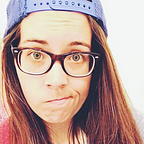Women You Should Know: These Female-Led Companies Have Been Working on Modest Activewear and Sport Hijabs
We recently published an article highlighting Nike’s decision to make a sport hijab for Muslim athletes. And while it’s pretty cool to see such a major company making options for a variety of athletes, many of you noted that Nike isn’t a perfect company and many female-owned companies have been doing similar work for years — decades even. So we spoke to a few women from sportswear companies to see what their companies are doing for Muslim athletes and what they think about Nike’s decision to begin making sport hijabs.
Over email, the Founder and Creative Director of Capsters, Cindy van den Bremen, spoke with us about how Capsters, a company that “believes in the empowerment of women through sports,” has been making sport hijabs since way back in 1999! Here’s what Cindy had to say about creating a sport hijab:
“Back in 1999 I graduated [from design school having created] a series of sport hijabs because a girl got expelled from gym class due to her supposedly unsafe hijab. In court it was decided she could wear a turtle neck with swimming cap instead, since that would cover the same areas. It made me realize it was not about the covering, but about the way the girls cover themselves and that there was a task for me as a designer to design something that would meet both parties: a solution as well as safe in regards to identity of these girls.”
It’s cool to see that Cindy saw a problem and decided to make a solution. Something similar happened with Fatimah Hussein, the Founder of Asiya:
“We never were planning to make a business out of this. I started a girls program which provides a space for girls to be physically active, encouraging them to participate in sports in school and competing. We partnered with the University of Minnesota and when they did research they found that a lot of Muslim girls were not participating in sports because first there was no space and second there was a lack of clothes — barriers to clothes.”
They had space on the weekends to provide an area for the girls to play and noticed an immediate improvement in their confidence and willingness to join teams at school. But, Fatimah didn’t have a solution to the clothing problem. So she asked for help from the University of Minnesota School of Design and was able to get a grant to make prototypes of a sport hijab. The project began by asking the girls what they would like and it all moved forward from there:
“The girls were the center of the project. They designed uniforms. They designed hijabs. They designed basically the whole outfit that they would want to wear — the uniform that they would want to wear when they compete.”
And after they showed the project to the committee members of the program, it was suggested they take the project wider in order to provide the same options for other girls around the world.
How cool is that? The girls who were most impacted by the lack of options were the ones most involved in helping lead the way. And for the CEO of sportswear company Oiselle, Sally Bergesen, that’s exactly how she imagines it should be:
“Wouldn’t it be awesome if the women who are most affected and who most participate in sports from Middle Eastern countries or from the Muslim religion are actually most involved in production and making and selling of this product. As a Feminist and as a leader of a product company, that’s the direction I would like to see this go.”
Oiselle has been working with Saudi Olympian Sarah Attar since 2015 and helped Sarah when she needed a uniform that provided full coverage for the 2016 Olympics. In the 2012 London Olympics, Sarah was left scrambling looking for an appropriate uniform to run in that covered her completely but also allowed her to compete to her full ability. There just weren’t many options that worked for her. That’s where Oiselle came in.
“It’s been kind of a mission of ours to sponsor athletes in a new way and especially around women athletes who have a more complex trajectory in their lives in general.”
As far as Nike goes, the women we talked to were excited that Nike was moving into this space because they have such a large presence, it could provide even more options for girls and women who want to compete. But as Sally mentioned, it’s important to recognize the achievements of the companies that came before that have really done a lot of leg-work.
“It’s not that Nike doesn’t have a place, especially considering its reach but there really have been some great steps forward made by these smaller companies and they should be seen for that.”
There are studies showing that as teen girls develop and grow, many of them leave sports behind due to issues of clothing— from sports bras to hijabs. Sally, Cindy, and Fatimah (and their companies) are all working to improve access to these options for young girls in order to improve their lives. Fatimah sees this as an attainable goal:
“Muslim women and girls were not really competing. And they were missing out on the leadership development, healthy lifestyles — all of the things that you get when you’re competing in organized sports. And that it was due to lack of clothing — we thought that was something we could really work together to make that change.”
And it seems like there’s a great group of women already making strides to provide these opportunities. Thank you to Oiselle, Capsters, and Asiya for leading the way!
